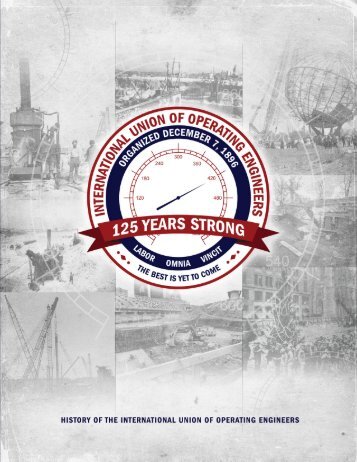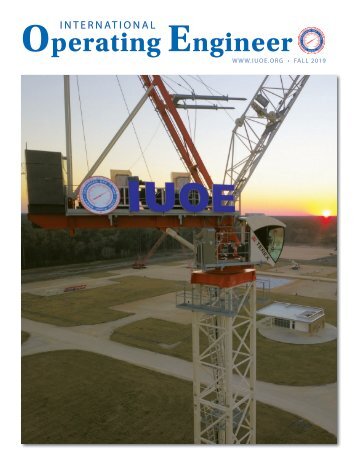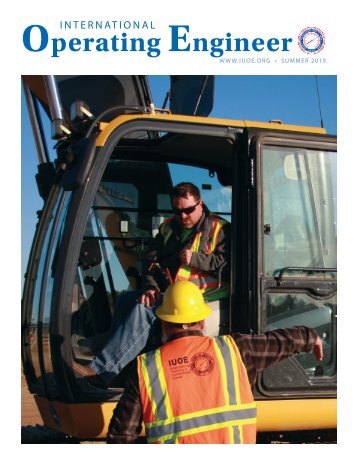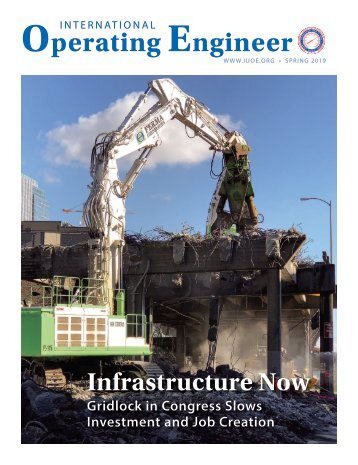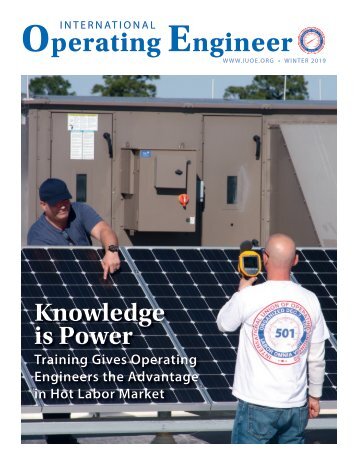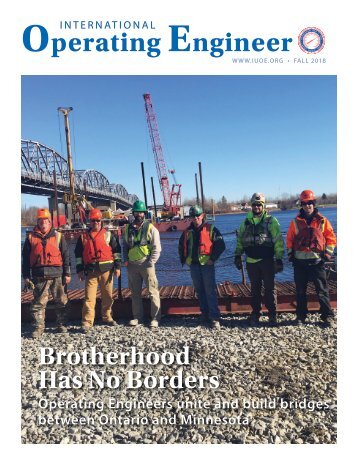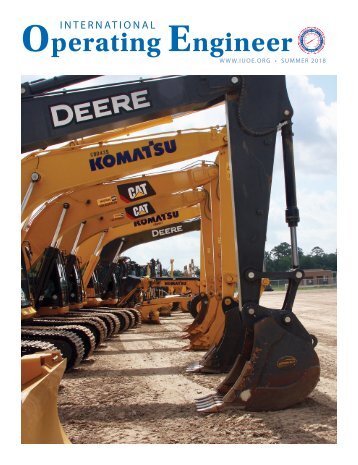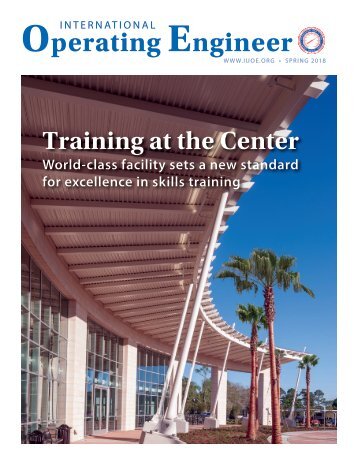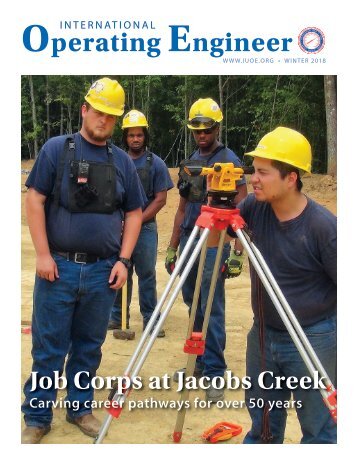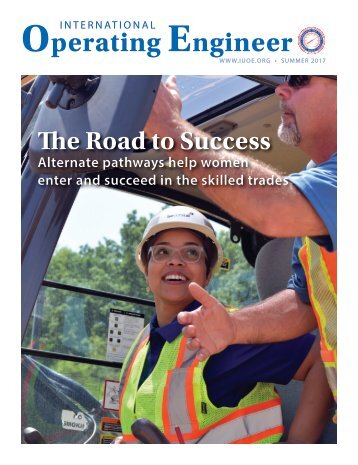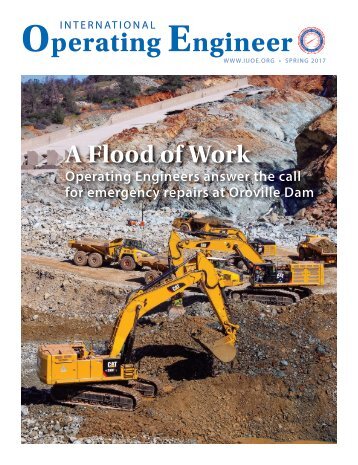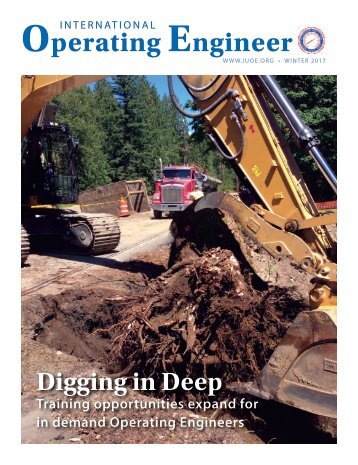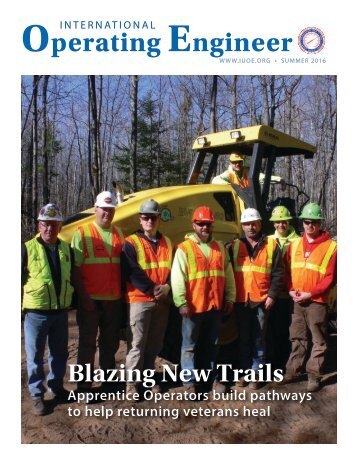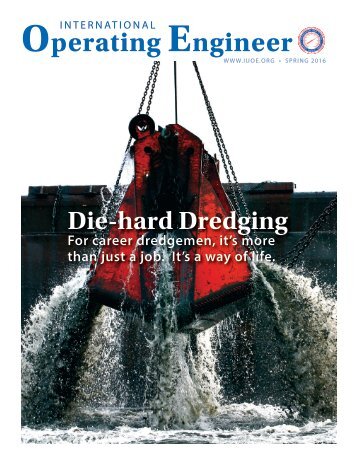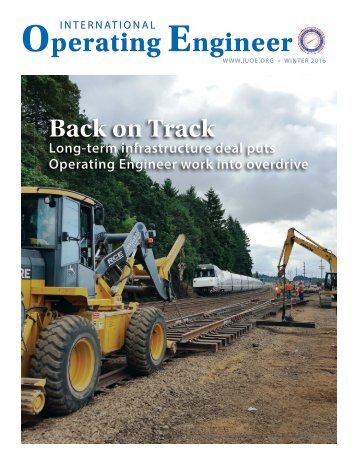125 Years Strong – An IUOE History
- Text
- Wwwiuoeorg
- Vincit
- Omnia
- Engineer
- Convention
- Membership
- Locals
- Operating
- Engineers
INTERNATIONAL UNION OF
INTERNATIONAL UNION OF OPERATING ENGINEERS SYSTEM OF BRANCH LOCALS FORMED OUT OF NECESSITY The I.U.O.E. charters “branches” of its locals as a vital means by which the union provides representation to apprentices and workers who are not operating engineers. Instead, these branch locals can represent other heavy-equipment operators and mechanics, as well as operations maintenance and other workers in building and industrial complexes and industry services throughout the United States and Canada – although with somewhat restricted membership privileges. For instance, in December 1933 Local No. 701 of Portland, Oregon, created branch Local No. 701-A for its apprentices, with jurisdiction over all boiler-firing and machine-oiling jobs, and branch Local No. 701-B for new journeyman members, who were able to transfer into the parent Local 701 by making a written request and paying the difference in the union’s initiation fee. Likewise, Local No. 132 of Charleston, West Virginia, chartered branch Local No. 132-C on November 1, 1960, to provide muchneeded union representation to an increasing number of workers in several rapidly expanding equipment-service, industrial-service and aggregate-and-sand companies within the local’s jurisdiction. In a current example, as of 2020 Local No. 3 of California, Hawaii, Nevada and Utah is the parent local to locals 3A (representing assistant engineers), 3B (miscellaneous journeymen), 3C (dredgemen), 3D (shop members and non-construction public employees), 3E (tech engineers and soil-testers), 3G (California Department of Transportation Unit 12 workers), 3M (healthcare workers) and 3R (registered apprentices). As early as 1906, some locals of the International Union of Steam Engineers (I.U.S.E.), which would become the International Union of Steam and Operating Engineers (I.U.S.O.E) in 1912 and then the I.U.O.E. in 1927, were already utilizing “subordinate” branch locals to organize firemen – or apprentices – who fired and maintained the engines of the machines being operated by journeyman engineers. Soon after, locals also formed branches for engineers performing lower-paying “street- and generalconstruction work.” Those parent locals primarily organized branches early on in order to control the entry of potentially competitive workers into the union and, as a result, the wage scales of journeyman engineers. As Professor Garth L. Mangum further explains in The Economic History of a Trade Union, “The branch locals were a compromise between the local unions’ reluctance to admit potential competitors and the international’s realization of the necessity for inclusion and control of all qualified and potential engineers.” However, the American Federation of Labor (A.F.L.), citing its commitment to protecting the jurisdiction of the International Brotherhood of Stationary Firemen, objected to the I.U.S.O.E.’s practice of branch locals. Subsequently, during its 34 th annual convention in November 1914, the A.F.L. passed a resolution warning the stationary engineers, “That the installation of branch locals, as now practiced by organizers of the International Union of Steam and Operating Engineers, shall be considered as a direct disregard of decisions of the American Federation of Labor and its executive council, which, if continued, shall be deemed sufficient cause for such discipline as future conventions may decide.” In response, the engineers’ union during its fifth biennial convention in September 1916 in Newark, New Jersey, adopted a report to recommend to the A.F.L. that it support an amalgamation of the firemen’s union into the I.U.S.O.E. The merger, however, was never accomplished. (The International Brotherhood of Stationary Firemen, originally formed to represent workers engaged in the operation of steam boilers, became the International Brotherhood of Firemen and Oilers in 1956 before it was merged into the Service Employees International Union {S.E.I.U.} as a multi-state affiliate known as S.E.I.U. Local 32BJ in 2008.) Ultimately, the I.U.S.O.E. made its practice of utilizing branch locals official when it integrated measures for the system into its constitution during the early 1920s, by which time the branchlocal system was essentially serving as a de-facto apprenticeship program. As such, the branch locals were afforded representation and many of the same rights and privileges of any local, albeit the branches were supervised by their respective parent locals. But the union had relatively few branch locals until the late 1930s, during which the I.U.O.E. began insisting that parent locals give higher priority to taking in members of their branches. Subsequently, after a General Executive Board resolution in 1938 further clarified the branch local system, the union rewrote its constitution that year to designate “A” branches, which would consist of firemen, oilers and operators of “minor” equipment, as apprentice and junior engineers’ subdivisions; while “B” branches, whose members would be known as “branch engineers,” were to be used for organizing and controlling unorganized workers. Two decades later, the Labor Management Reporting and Disclosure Act of 1959 (also known as the Landrum-Griffin Act), a federal law passed to regulate labor unions’ internal affairs, forced the union to significantly revise rules governing the rights of members of its branch locals – along with the multiple changes it required in the union’s constitution. Among the revisions, the act required the union to allow its branch members to nominate and vote for candidates for offices in parent locals, as well as run for those positions. non-affiliated stationary engineers. Most all of the spats were the product of former engineers of those different crafts transferring into the I.U.S.E. Conversely, convention attendees were also informed that the union had granted 77 new charters since its previous convention two years earlier, during which time 8,096 new members were admitted into the union. Additionally, delegates were told of a general increase in employment and further gains in the demand for an 8-hour day in Canada. Wielding Its Newfound Power Into 1911, the I.U.S.E. was constantly increasing in size and importance. Backed by the strong organization, its leaders were able to speak out and criticize the laws and lawmakers of such industrially controlled LABOR OMNIA VINCIT states as Massachusetts, as well as condemn trusts and monopolies that were denouncing organized labor. While engineers were defending the general labor movement, they also were seeking to advance their own interests by having uniform regulations and effective licensing for engineers established in states and municipalities, insisting that public officials protect against individuals who were in charge of steam plants by virtue of ill-gotten or undeserved licenses. In New York City in January of 1912, for example, the entire operating force of boiler inspection and engineers licensing under the Police Department was put out of it jobs after it was discovered that they were giving licenses to unqualified applicants who “put up the price,” instead of applicants who had shown the required knowledge for the work. The International Union of Steam and Operating Engineers Executive Board of 1916, elected during the union’s Fifth Biennial Convention held in Newark, New Jersey, consisted of (left to right, front row) Third Vice-President Joseph Muntefering of Brooklyn; General Secretary-Treasurer James G. Hannahan of Chicago; General President Milton Snellings of Chicago; First Vice-President Arthur M. Huddell of Chelsea, Massachusetts; and Second Vice-President William MacKenzie of Portland; and (standing) Trustees Chairman Charles Gralfs of Chicago; Trustee James A. Cooley of Philadelphia; Trustee F. A. Fitzgerald of New Haven, Connecticut; Fifth Vice-President George M. Jenkins of East St. Louis; and Fourth Vice-President Dave Evans of Cincinnati. WORK CONQUERS ALL
- Page 2: LABOR OMNIA VINCIT WORK CONQUERS AL
- Page 6: INTERNATIONAL UNION OF OPERATING EN
- Page 10: INTERNATIONAL UNION OF OPERATING EN
- Page 14: INTERNATIONAL UNION OF OPERATING EN
- Page 18: INTERNATIONAL UNION OF OPERATING EN
- Page 24: INTERNATIONAL UNION OF OPERATING EN
- Page 28: INTERNATIONAL UNION OF OPERATING EN
- Page 32: INTERNATIONAL UNION OF OPERATING EN
- Page 36: INTERNATIONAL UNION OF OPERATING EN
- Page 40: INTERNATIONAL UNION OF OPERATING EN
- Page 44: INTERNATIONAL UNION OF OPERATING EN
- Page 48: INTERNATIONAL UNION OF OPERATING EN
- Page 52: INTERNATIONAL UNION OF OPERATING EN
- Page 56: INTERNATIONAL UNION OF OPERATING EN
- Page 60: INTERNATIONAL UNION OF OPERATING EN
- Page 64: INTERNATIONAL UNION OF OPERATING EN
- Page 68: INTERNATIONAL UNION OF OPERATING EN
- Page 72:
INTERNATIONAL UNION OF OPERATING EN
- Page 76:
INTERNATIONAL UNION OF OPERATING EN
- Page 80:
INTERNATIONAL UNION OF OPERATING EN
- Page 84:
INTERNATIONAL UNION OF OPERATING EN
- Page 88:
INTERNATIONAL UNION OF OPERATING EN
- Page 92:
INTERNATIONAL UNION OF OPERATING EN
- Page 96:
INTERNATIONAL UNION OF OPERATING EN
- Page 100:
INTERNATIONAL UNION OF OPERATING EN
- Page 104:
INTERNATIONAL UNION OF OPERATING EN
- Page 108:
INTERNATIONAL UNION OF OPERATING EN
- Page 112:
INTERNATIONAL UNION OF OPERATING EN
- Page 116:
INTERNATIONAL UNION OF OPERATING EN
- Page 120:
INTERNATIONAL UNION OF OPERATING EN
- Page 124:
INTERNATIONAL UNION OF OPERATING EN
Inappropriate
Loading...
Mail this publication
Loading...
Embed
Loading...
International Operating Engineer
HEADQUARTERS
INTERNATIONAL UNION OF OPERATING ENGINEERS (IUOE)
1125 17th Street, NW
Washington, DC 20036
202 429-9100
CONTACT US
Send us an email here.
©2010 International Union of Operating Engineers. All Rights Reserved.|Terms Of Use|Privacy Statement|Sitemap

